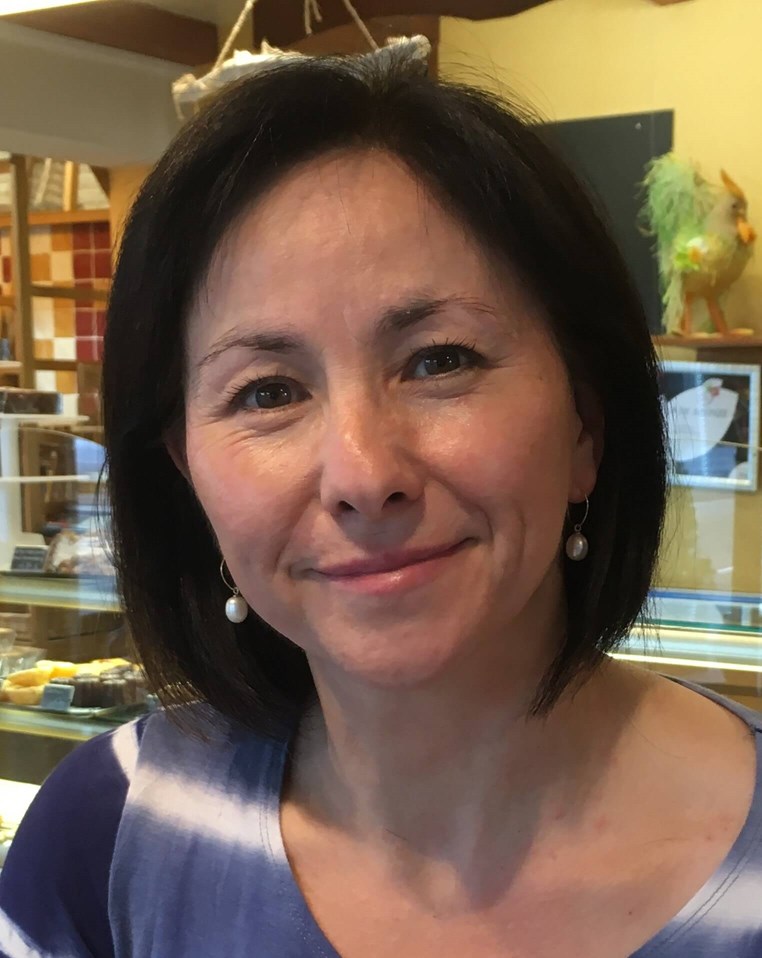
Lin Lee’s Story
Blog
21 Oct 2021

Osteoporosis associated with pregnancy is an extremely rare condition which causes bones to break easily either during the third trimester, during labour or shortly after giving birth. These breaks or fractures usually occur in the spine, or occasionally the hip or feet, causing pain and disability. It is currently not known what causes this condition.
We spoke to Lin-Lee Aspin, 54, who lives in Lancashire with her husband and two sons. She experienced pregnancy associated osteoporosis after the birth of her first child. She shares her experience of living with this rare disease in today’s blog.
Pain and symptoms
“At 35, I experienced a normal pregnancy with my first child, however during the third trimester it gradually became more and more uncomfortable to lie on my back, which is how I usually sleep. I spoke about this during my antenatal appointments, and she told me to go back to her if the pain became worse. It was hard to gauge how bad back pain should be having not been pregnant before.”
With this rare type of osteoporosis, bones seem to break during the late stages of pregnancy, when a woman gives birth, or up to eight to twelve weeks following delivery. Lin-Lee explains her experience:
“About one week after giving birth, I sat down very heavily into an armchair whilst holding my son. I felt something go in my lower back and when I tried to get up, the pain when trying to lean forward was too great to bear. The nights were the worst. I would get out of bed to feed my son and as I stood from lying down, I would collapse onto all fours with excruciating pain.”
According to our new report, over 1 in 3 who are in pain due to osteoporosis say it is severe or unbearable. Lin-Lee says: “I think I have a high pain threshold. The difference with labour is you know the pain is going to end but with osteoporosis, unless you can get it under control, it’s really hard to cope.”
Getting a diagnosis
Following the birth of her first child, Lin-Lee had several physiotherapy appointments and an emergency doctor’s appointment, but her pain continued to worsen. Eleven weeks after giving birth to her son, Lin-Lee collapsed in her GP surgery and was referred to a rheumatologist that afternoon, who then immediately sent her for X-rays, a bone density scan and measured her height. Following the results, Lin-Lee discovered she had pregnancy associated osteoporosis and had suffered multiple spinal fractures, causing her torso to compress. She said: “Before pregnancy I was a little over 5’ 3”. I was really shocked when the nurse told me that I was just 5’1”.”
Finding a supportive community
“It was a relief to discover what the problem was, but I think I went into complete shock. I felt like my life was over and I would be in pain and fear forever. I cried a lot during the first few months after diagnosis and I did a huge amount of research about pregnancy associated osteoporosis. It was very comforting to be able to contact the ROS and talk with other sufferers.
I remember reading a few sentences from a lady involved with the Royal Osteoporosis Society with pregnancy associated osteoporosis. She was in her fifties and had several children. She was now pain free and rode horses. I just couldn’t imagine being that well ever again. But I was wrong.”
A brighter future
After a second pregnancy without the effects of pregnancy associated osteoporosis, and now with two teenage sons, Lin-Lee is virtually pain-free but continues to live with a diagnosis of osteopenia. She explains: “Now I’m absolutely fine, doing Pilates and yoga. However, I’m always conscious about my back and it does make noises which it never used to. The ROS was really helpful and put me in touch with other ladies who were suffering . Being able to speak with fellow sufferers who had receovered and understood what I was going thorugh, gave me real hope for a brighter future.”
Do you have a story you’d like to share? We’d love to hear from you. Tell us about your life with osteoporosis and encourage friends, family and colleagues to use our bone health checklist on Facebook, Twitter or Instagram. #WOD21 #1EveryMinute
 Search
Search
 Login
Login

